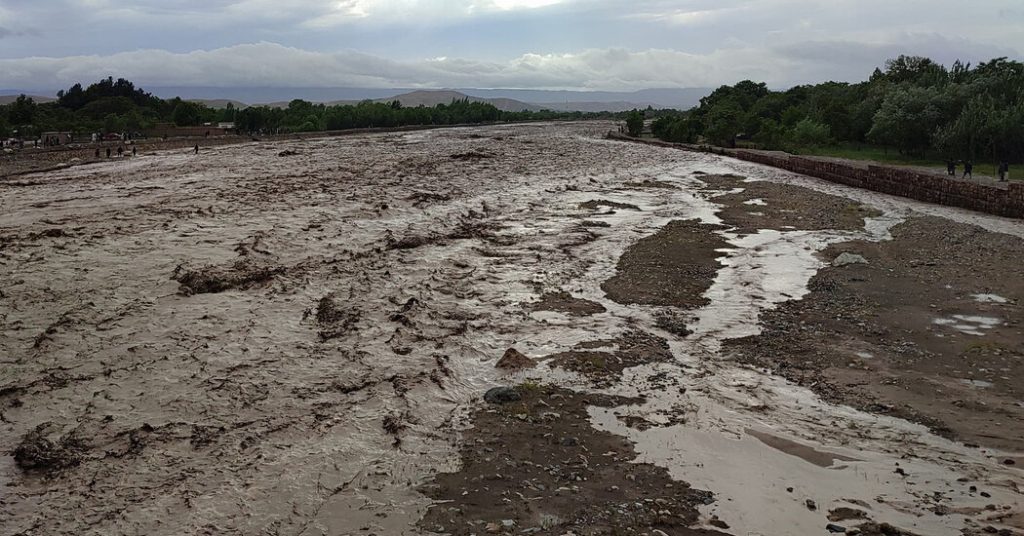Heavy seasonal rains have caused flash floods across Afghanistan, leading to the deaths of at least 50 people in Baghlan province, with dozens more missing and thousands displaced. Most of the victims in Baghlan were women and children. Other provinces affected by the flooding include Badakhshan, Ghor, and Herat. The government has dispatched rescue teams to provide food, aid, medical assistance, and ambulances to the affected areas, with doctors being deployed to Parwan province as well.
The flooding in Baghlan province has resulted in roads being submerged in muddy waters, with images showing people trying to move vehicles stuck in the sludge. The country has been facing a dire economic crisis in recent years, along with natural disasters and the ongoing conflict with Pakistan. The heavy rains this year have been attributed in part to the El Niño phenomenon, increasing the risk of floods that threaten crop production and food supplies, particularly in the north and northeast regions. Flash floods in the previous month caused extensive damage, resulting in numerous casualties, destroyed homes, and ruined farmland.
The devastation caused by the floods also impacts the country’s infrastructure, including roads, bridges, and power systems, which could hinder the delivery of humanitarian assistance. Afghanistan is heavily dependent on agriculture, with at least 80% of the population relying on it for income. The United Nations warns that any further flooding would have a severe impact on the population, already struggling with economic collapse, malnutrition, and ongoing conflict. The International Rescue Committee emphasizes the need for urgent assistance to help those affected by the floods and prevent further hardship.
The Taliban government has been coordinating rescue and relief efforts in the affected provinces, with a focus on providing support to those most vulnerable, such as women and children. The floods have caused widespread destruction, claiming lives, displacing families, and causing significant damage to homes and infrastructure. The government’s response includes sending aid, medical teams, and other resources to help those in need, while also assessing the extent of the damage and coordinating relief efforts with local authorities.
The continuous rains and flood-related disasters highlight the vulnerability of Afghanistan’s population, particularly in rural areas where access to resources and assistance is limited. The government’s response to the floods underscores the need for improved disaster preparedness and response mechanisms to mitigate the impact of natural disasters on communities. Addressing the underlying factors contributing to the country’s economic challenges and instability is crucial to building resilience and ensuring the well-being of the population in times of crisis.
The international community has expressed concern over the situation in Afghanistan, calling for increased support and assistance to address the immediate needs of those affected by the floods. The devastating impact of the floods on lives, livelihoods, and infrastructure underscores the importance of coordinated efforts to provide aid, restore essential services, and rebuild communities. As the country continues to grapple with multiple challenges, including economic instability, conflict, and natural disasters, it is essential for the government and its partners to work together to ensure the well-being and recovery of the population in the face of adversity.


